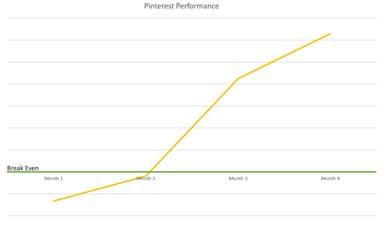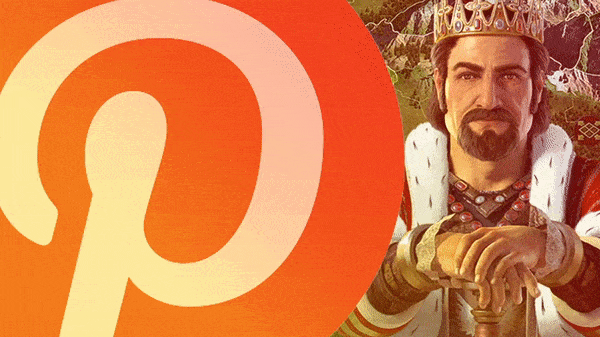Mobile and web browser game developer InnoGames, which has reported strong and steady growth over the past few years, isn’t averse to experimenting with promotional campaigns.
Although the company still relies heavily on traditional social media channels such as Facebook, Twitter and YouTube, it has made the unconventional move to the Pinterest platform—where people go to share and find ideas and “pin” them to custom boards—to promote the mobile version of Forge of Empires.

Pinterest attracts over 150 million active users a month, largely from people looking for inspiration or to sell their goods, and millennials use it about as much as Instagram, but marketers often overlook the fast-growing platform.
“What makes Pinterest so interesting and distinguishes it from other social networks is the high female share and the fact that shopping is a large part of the user experience,” InnoGames’ performance marketing manager Mathias Wuerdemann told AListDaily. “At InnoGames, we are constantly looking for new channels to reach untapped audiences, so Pinterest became an option due to what it offered advertisers. Unlike other networks, promoted pins last forever and continue to engage people. According to Pinterest, advertisers receive an average of 20 percent more free clicks in the month after launching a promoted pin.”
Wuerdemann added that InnoGames began creating promoted pins for Forge of Empires at the end of last year, and its decision to try Pinterest was based on a number of reasons, with the first being the platform’s growth, especially with female users.
“First, the high female share of the fast-growing social network represents a good opportunity for our upcoming mobile games, which we will target at both genders,” said Wuerdemann. “Second, we expect Pinterest to be a good addition to our Facebook campaigns to find untapped audiences. Furthermore, we assume shopping being a large part of the Pinterest UX to be a good indication for a high share of valuable players among the user base.”
Wuerdemann then went into detail about why InnoGames was tuning its campaign for both genders instead of focusing more on the predominantly female (about 81 percent) user base.
“When we launched our first campaigns on Pinterest, we decided to start with a mix of all reasonable targeting types,” Wuerdemann explained. “To establish a basis for optimization, we set up gaming related keywords, interest and act alike campaigns with a broad targeting. To our surprise, the network gave us similar performance for [both] male and female audiences despite the high share of female users. The click-through rate and conversion rate were at a comparable level, which indicates that Pinterest can be used as other networks to target potential players.”
Wuerdemann also went into detail about engaging with Pinterest users.

“At its most basic level, Pinterest differs from other platforms due to its users’ motivation,” he said. “Advertisers need to think of how to make their product stand out. Having said that, like Facebook, Pinterest is a content-driven social network. Meaning that besides targeting the right audience, using the right creatives is crucial. If you want to decrease the [cost per click] for your campaigns, you should work on your creatives before you adjust the bids. Be aware that your campaigns compete against the content of the user’s friends, celebrities and your [business] competitors.”
According to Wuerdemann, the Pinterest campaign is paying off, and the company broke even after one month of launching it. He also explained that InnoGames scales its campaigns step-by-step instead of going all in at the start, and it is currently optimizing it toward customer lifetime value.
Ultimately, Wuerdemann believes that Pinterest is a promising social network for performance advertisers, particularly for games.
“It’s a relatively new platform with less competition than Facebook and Instagram,” said Wuerdemann. “[Also], the user behavior differs from established networks. Instead of connecting or communicating with friends, people’s motivation is to look for inspiration. In this context, recommending new games makes perfect sense, and for us, is a worthwhile platform for advertising mobile games.”

